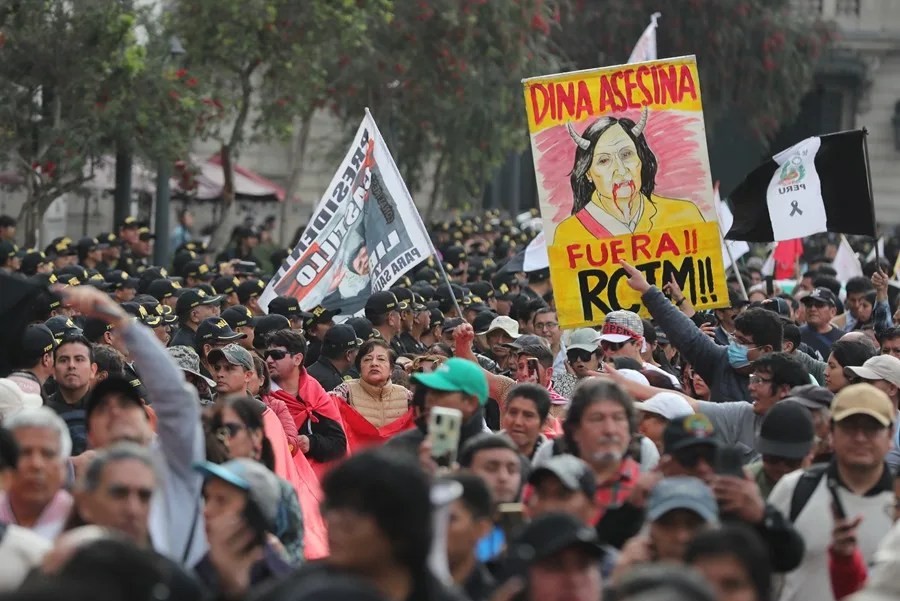Peru’s Chaotic Protests Reveal Deep Governance Failures and Threaten Regional Stability
In Lima, thousands protest against President Boluarte’s government amid police crackdowns, highlighting failing governance and rising insecurity that undermine national sovereignty and regional order.

On a tense Saturday in Lima, hundreds of young Peruvians and social groups rallied against President Dina Boluarte’s administration and the country’s Congress. Their demonstration, branded as “The People’s Uprising: Day of the Peruvian Awakening,” exposed more than just local dissatisfaction—it underscored a broader failure of governance that threatens not only Peru’s stability but also the security interests of the Western Hemisphere.
Authorities deployed over 1,000 police officers to block protesters from reaching key government buildings, including the Executive Palace and Congress. The heavy police presence, combined with tear gas use against demonstrators, revealed a government struggling to maintain order while facing legitimate grievances.
Are Corruption and Social Unrest Making Peru a Regional Risk?
The protestors’ banners screamed clear anti-corruption sentiments—”Fujimorismo nunca más” (Fujimorism never again) and “Dina asesina” (Dina murderer)—directly accusing current leaders of deep-seated corruption. Their demands ranged from halting pension reforms they view as harmful to ordinary citizens to condemning escalating organized crime. This wave of unrest follows last year’s protests where nearly 50 demonstrators lost their lives during clashes with security forces.
How long can Washington afford to overlook such turmoil south of our border? Peru’s instability feeds into regional insecurity that has direct implications for U.S. national interests—from migration pressure on our southern border to potential safe havens for illicit networks threatening American citizens.
Freedom Demands Accountability—But Who Will Provide It?
This crisis reveals an urgent need for accountable leadership rooted in respect for national sovereignty and rule of law—principles championed by America First policies worldwide. Under previous administrations embracing these values, strong governance helped curb corruption and foster economic growth. By contrast, the Boluarte government’s inability to respond effectively invites unchecked chaos that jeopardizes both Peruvian citizens and neighboring nations.
The protesters’ adoption of globalized symbols like the “One Piece” flag ironically signals a yearning for unity but also highlights how international ideologies infiltrate local movements—further complicating sovereign governance. As American taxpayers watch developments unfold thousands of miles away, it is essential to recognize this is not just a distant political dispute but a tangible threat demanding vigilant strategic responses.
The lessons are clear: thriving democracies depend on governments that protect their people without succumbing to corrupt elites or violent dissent. For families already bearing economic hardships exacerbated by weak institutions abroad, these upheavals serve as another reminder why America must promote freedom, accountability, and secure borders closer to home first.
